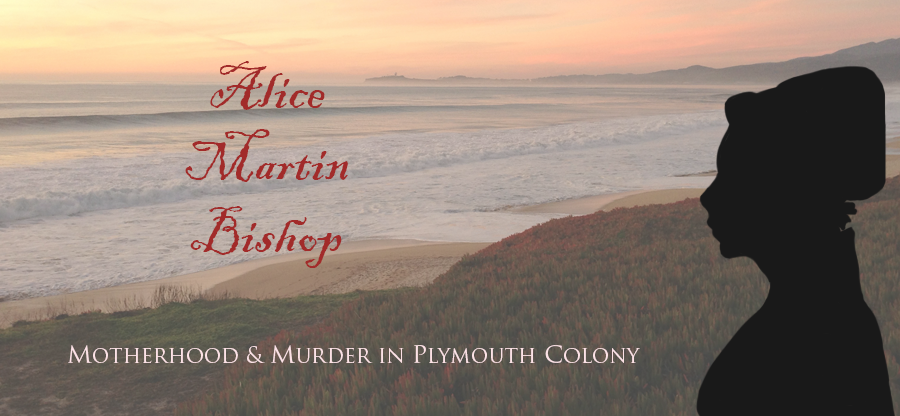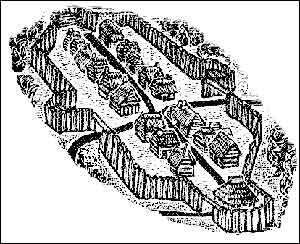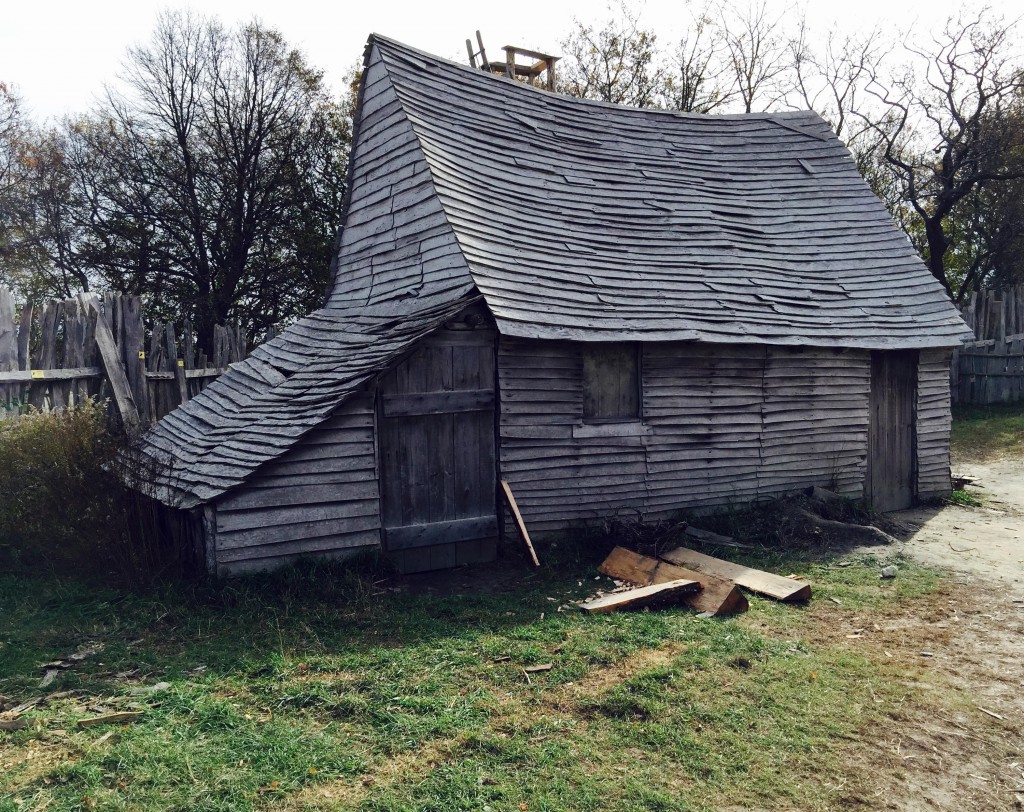Meet our 10x great grandmother. In 1648, Alice Martin Bishop of Plymouth Colony was hanged for the murder of her 4-year-old daughter, Martha Clarke. Join us as we reconstruct Alice’s world. Here, we learn more about her origins, her husbands, her surviving children, and her Puritan community — all in an attempt to make sense of a crime so unnatural, it continues to fascinate, nearly 400 years later.
Category Archives: Uncategorized
Languishing in the New World: Depressed Pilgrims
Erin Taylor and Kristin Luce, December 2015
We think of the Pilgrims as resilient adventurers upheld by unwavering religious faith, but they were also human beings in the midst of what was, and continues to be, one of the most difficult emotional challenges a person can face: immigration and exile.
(Philbrick, 76)
Depression, although not named as such, was a recognizable symptom in colonial America, described by terms such as “dropsy,” “lethargy,” and “languishing.” Most, if not all, first-generation Plymouth Colony residents no doubt suffered some feelings of despair and trauma simply by coming to New England. Transatlantic voyages were arduous — physically, mentally, and emotionally — with family members and friends dying on board, and others left behind, likely never to be seen again. As William Bradford recalled of the Mayflower,
Being thus passed the vast ocean, and a sea of troubles…they had now no friends to welcome them, nor inns to entertain or refresh their weather beaten bodies, no houses or much less towns to repair to, to seek for succor.
In fact, Bradford’s first wife Dorothy fell off the Mayflower (when it was moored in Plymouth Harbor) and drowned, and many speculate that it was not an accident but a suicide, Dorothy’s grief at leaving their three-year-old son behind in Holland unbearable.
Laid to Unrest
Erin Taylor, March 2015
There is no grave marker for Alice Martin Bishop, nor her three daughters. We can’t tell you where George Clarke or Richard Bishop is buried — not the town or cemetery. Matter of fact, given her crime, Alice may be buried in an unmarked grave far from her family and neighbors.
During our 2014 trip to Massachusetts, I think Kristin and I were moved most by the graveyards, knowing these spaces were the closest we would ever get to our ancestors. Together, we visited the Witch Trials Memorial and The Burying Point Cemetery in Salem, Cove Burying Ground at Eastham, Cobb’s Hill Cemetery in Barnstable (at the First Unitarian Church) and Burial Hill in Plymouth. Kristin also took the opportunity to visit the graves of Abigail Adams and John Winthrop while she was in Massachusetts.
Legible headstones before 1700 are rare. The earliest grave markers were made of wood and have, naturally, not survived. As stone cutters came to the colonies, their work included memorials, but many of these have faded or crumbled thanks to erosion, lichen, vandals, and robbers.
Yes, vandals and robbers. For decades now, some of our oldest cemeteries’ gravestones have been stolen, defaced, and used as lawn chairs and ashtrays. Charming, America.
Re-creating and Questioning How Martha Was Murdered
Erin Taylor, February 2015
This post shares discussions and insights Kristin and I had after visiting Plimoth Plantation’s 1627 town site (November 2014). The good people at Plimoth Plantation have re-created the first settlement in painstaking detail, and it turns out, a Plymouth home — our AMB crime scene — wasn’t exactly as I had imagined it. The homes were smaller and with lower ceilings than I had figured (of course, I’m nearly six feet tall, so I have a skewed perspective). Also, the houses sat closer together than I had mentally plotted.
We spent two days at Plimoth Plantation, viewing the homes and speaking with reenactors. As we shared our thoughts about Martha’s murder based on what we saw there, it must be remembered this is a 1627 re-creation — in other words, twenty years before her death. By the 1640s, colonists had more tools and construction supplies, and homes were built under less dire circumstances. Within two decades of the Mayflower’s arrival, several towns were developing in the wider colony, but we assume the Bishops lived in Plymouth town proper because the Ramsdens and Winslows (Josiah, head) were their neighbors.
Make Time for Plimoth Plantation
Erin Taylor, December 2014
Ask Kristin. I am a curmudgeon of tourist. I sneer at the gift shops, recoil at the fellow visitors replete with whining teenagers and their fanny-packed parents. So, as we planned our trip to Plymouth, I dreaded the notion of visiting Plimoth Plantation on a Saturday in November. I’m all for historic preservation, but seriously questioned the quality of historic reenactments. For the record, “Plimoth” is the spelling Governor Bradford used in his history of the colony.
Attitude, camera, and notebook in hand, I headed down to the 1627 “authentic” Plimoth village and was immediately smitten. Kudos to the nonprofit Plimoth Plantation for an engaging and transformative experience. I was especially impressed with the reenactors and their training (a new source of fascination for Kristin and myself). If there is an international standard for reenacting history, I’d wager Plimoth is setting it. Do visit – with your children or students especially – and live some American history.
Certainly, the museum needs to fund itself so there is the usual array of retail – ye old tyme thermal mug, authentic colonial fudge (cocoa wouldn’t be seen in New England for at least another century). But these are kept at a tasteful distance from the reenactment sites. And, in full, ashamed disclosure, I skipped the Wampanoag village (Native American) as I was so intent on spending time in a home similar to Alice Martin Bishop’s.
Rethinking the Knife
Kristin Luce, December 2014
Historians’ perceptions of the Pilgrims and life in Plymouth Colony evolve as discoveries are made — previously unpublished probate inventories shed light on what the colonists wore or owned, freshly unearthed archaeological finds provide insight into the buildings that housed those colonists, or the items they used to conduct the business of daily living.
Our recent trip to Plimoth Plantation allowed us to peek through a re-created window into Alice Martin Bishop’s world, and gave us a sharper focus on the tool that is at the heart of her crime – the knife.
What we previously assumed to be a crude and rare item turns out to have been a common household possession. All men would have had their own knife, and most goodwives would have owned one as well — or possibly shared one if more than one adult female lived in the household.
Absolving Neighboring Natives
Erin Taylor, December 2014
I feel like a real Cotton Mather (a Puritan joke of pitiable proportions) to suggest this so close to Thanksgiving, but today, as I read the story of Hannah Duston, I wondered why we never considered another possible killer.
Goodwife Hannah Duston lived in the western, frontier town of Haverhill, Massachusetts, at the very end of the seventeenth century. Her home was overtaken by natives on a retaliatory warpath. The men took Hannah, her attending midwife (for Hannah had just delivered six days prior), and then “brained…against a nearby apple tree” her infant daughter who was…wait for it….named Martha (Davis, 45). Hannah eventually escaped – a gruesome tale that can he read here.
Obviously, Martha was a common name. As were Indian raids and hostage taking. Many hostage colonists were incorporated into native communities, often as servants. Others were ransomed off, back to their English communities or enemies such as the French. Alden Vaughan and Daniel Richter summed that more than 1600 regional colonists were kidnapped between 1675 and 1763. Bloody interactions with native peoples were certainly a more common colonial experience and expectation than any turkey-centered feasting. Indeed, Alice’s adulthood would have been marked by outright wars, raids, and murdering on both sides.
However, there is absolutely zero indication that an Indian came into the Bishop home and slaughtered Martha. Undoubtedly, the jurors and Governor Bradford would have made such a possibility public knowledge. For this scenario to be feasible, we have to imagine the Bishops not living in a town setting like Barnstable or Plymouth where houses sat very close together. As Plymouth Colony expanded and new lands were settled, this is, admittedly, a possibility. But it still doesn’t make a great deal of sense. Why would Alice confess to the crime rather than point the finger? What about the knife? Did the murdering native arrive empty handed and pick up the kitchen knife? Or was he (or, she?) in possession of English tableware and chose that over a tomahawk to kill Martha? Not likely. Why Martha and not Alice, Abigail, and Damaris as well? Why leave the weapon behind?
Nov 2014: Heading to Plymouth!
Kristin and I are heading to Plymouth in the coming week and we are beyond excited! We’ll share lots of pictures and insights from our trip. We have this pipe dream that we will come across Alice’s diary (which tells us who her parents are), her confession as to why she killed Martha (or who the real killer is), cause of death for George Clarke, and what happened to his daughter, Abigail. Perhaps, we have overly ambitious expectations….
On another note, I want to publicly thank my outstanding co-author, Kristin Luce. She is 100 percent the motivation for this blog overhaul. Many of the pieces on this blog reflect Kristin’s high-caliber work and discuss matters I had never considered. Kristin asks the best questions as a critical reader and keeps my punctuation from being another family crime.
Martha on the Day After Her Murder
Erin Taylor, July 2014
Who tended to Martha’s body? Was seven-year-old Abigail given this traumatic task? Did neighbors step in, moving the tiny corpse from the upper chamber to be washed and shrouded on the Bishops’ only table? Was Alice allowed to do this? Was she forced to?
It is likely that every Plymouth adult woman had participated in at least one burial preparation. People died of the typical causes — old age and illnesses — but accidental and infant deaths were also common. Tending to the dead was a colony task shared by women and men: the former preparing the body and the latter digging the grave, building the coffin, and often, designing a memorial marker. There were costs and craftsmen associated with burials (Deetz, 168) and we assume, certainly hope, that Richard covered these expenses for his stepdaughter. The standard for a “decent” burial included washing and shrouding the body in cloth, likely linen, and a simple coffin. Grave diggers were often hired, but perhaps Richard did this task himself.
Burial Hill, near Leyden Street, was the colony’s first graveyard and several notable settlers are buried there. Maybe, Martha rests there. However, since seventeenth-century grave markers were made of wood and not stone, none survive for descendants to visit. The same is true for Alice, although she may not have been admitted into this esteemed cemetery after her execution.
It is also possible that Martha’s body traveled back to Barnstable to be buried alongside her father, George Clarke. Again, no gravestones from that period survive and a search of all pre-Independence gravesites for that area did not generate any George or Martha Clarkes.




